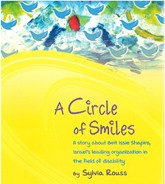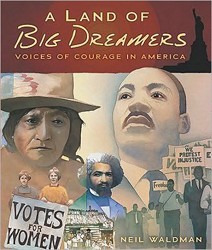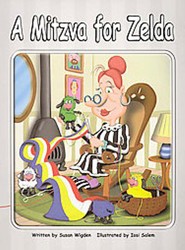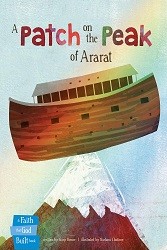By
– January 16, 2012
An obscure Jewish custom from Eastern Europe known as a shvartze chaseneh or “black wedding” [aka, cholera wedding] is the basis for this original tale. Reb Yiske, leader of a klezmer band, is summoned to Pinsk by Rabbi Yamferd to play at an important wedding. Not until he and his band arrive does the Rabbi explain that there is a cholera epidemic in the shtetl, and as a last resort to counteract the disease he will be performing a wedding between two orphans in the cemetery. But first Reb Yiske must find an appropriate groom, so he turns to the town’s barber for suggestions, and finally settles on the honest and hardworking keeper of the well, Reb Shmuel, to wed the good hearted Shyendle- Rivke. The entire town marches to the graveyard for the ceremony, after which they dance until morning among the tombstones, bringing about a miraculous end to the epidemic. This book is something of a puzzle, for it combines the playful storyteller’s language and amusing illustrations of a children’s book with a dark and some would say “macabre” ritual. Reb Yiske arrives in Pinsk not knowing that he’s entered a village where disease is rampant, and indeed there is little in either the text or the illustrations to suggest that anything dire is going on there. Child-like pastel drawings feature big-eyed townspeople with large heads, thin arms, and comic features dressed in peasant clothes whose expressions are more often humorous than serious, and even the graveyard scene is done in pleasant blue tones framed with flowers to minimize any scariness attached to such a scene. Still, there are things to wonder about in a book apparently intended for a younger audience. For example, the explanation of why the wedding takes place in a cemetery is confusing (“‘We hope the spirits of loved ones still live in their children and grandchildren,’ Rabbi Yamferd explained.”). Also, because Reb Yiske goes looking for a groom who is an orphan, the text includes the reasons why each candidate’s parents died, which might frighten some children (“…his parents died in a fire when he was a baby. Oy. Oy. Oy.”) Overall, this story raises more questions than it answers, one of which has to be, why use this particular ritual as a basis for a children’s book? Ages 7 – 9.
Teri Markson has been a children’s librarian for over 18 years. She is currently the acting senior librarian at the Valley Plaza Branch Library in North Hollywood, CA.





